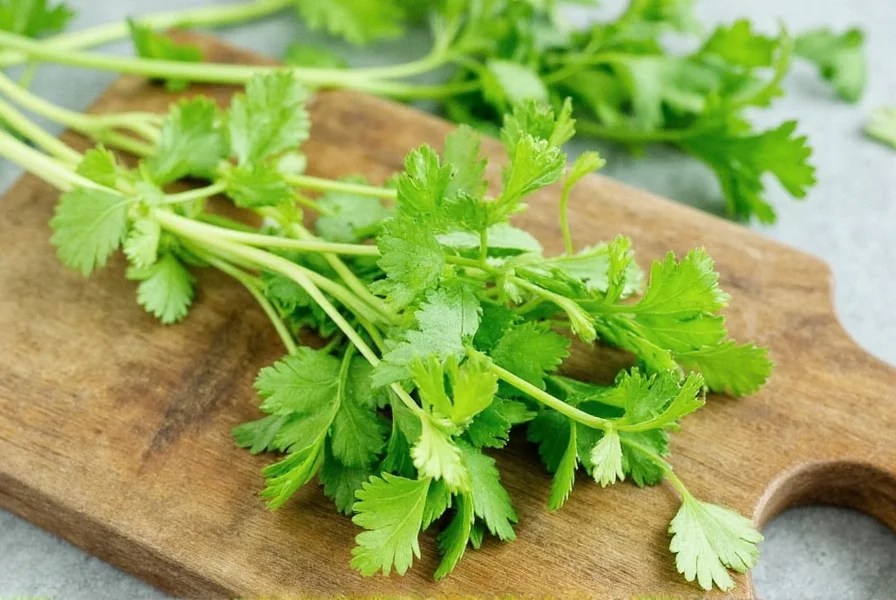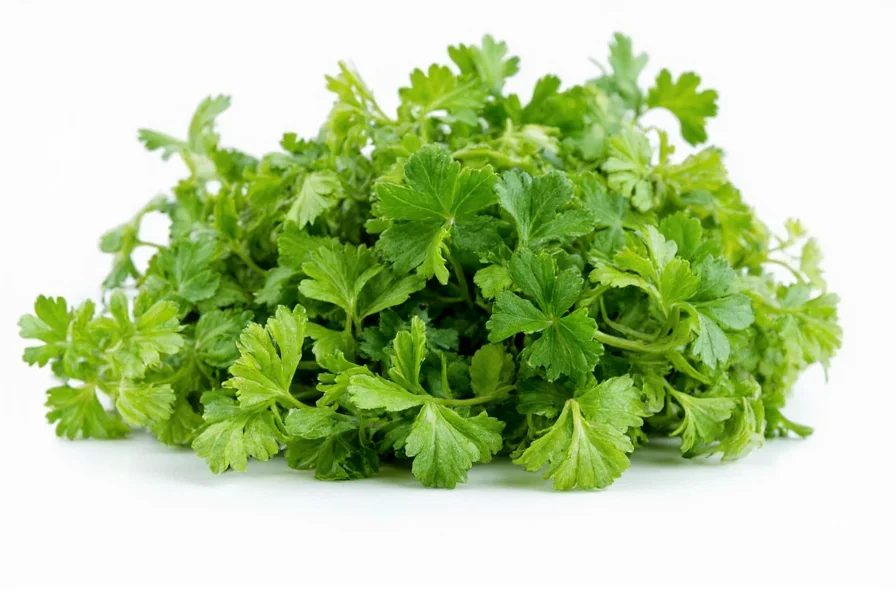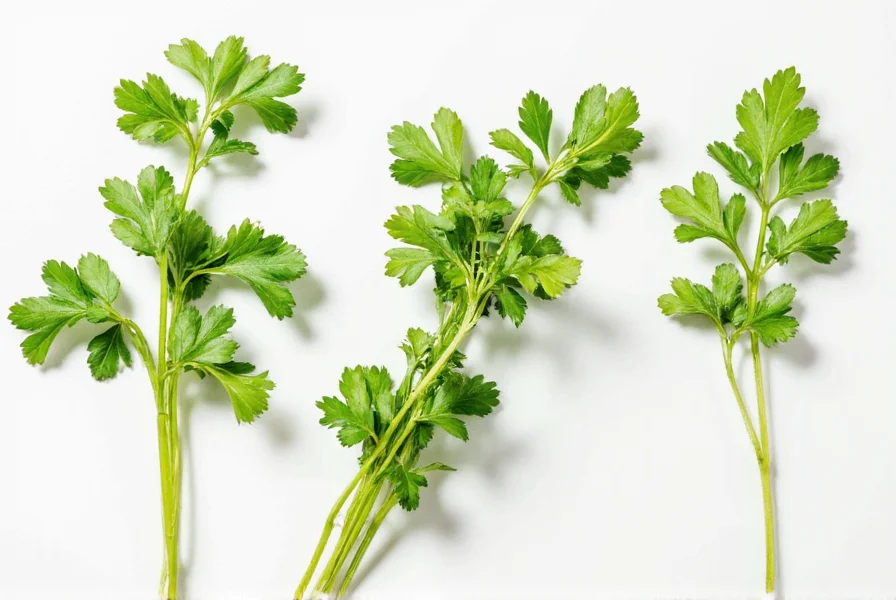Understanding Coriander: More Than Just an Herb
Coriander, scientifically known as Coriandrum sativum, belongs to the Apiaceae family alongside parsley, carrots, and celery. This versatile plant produces two distinct culinary products: the fresh green leaves and stems (often called cilantro in North America), and the dried spherical seeds. Understanding the difference between coriander and cilantro is crucial for accurate recipe execution, especially when following international cookbooks.
Botanical Characteristics and Growth Cycle
Coriander is an annual herb that grows to about 50 cm tall with slender stems and delicate, lacy leaves. The plant produces small white or pale pink flowers that develop into the characteristic round seeds. What many don't realize is that the entire plant is edible at different stages:
- Leaves and stems: Harvested when young for maximum flavor
- Flowers: Edible with a mild coriander taste
- Seeds: Collected when brown and fully mature
- Roots: Used in some Southeast Asian cuisines
Regional Terminology Explained
The confusion between coriander and cilantro stems from regional language differences. In British English and throughout most of the world, “coriander” refers to both the fresh herb and the dried seeds. In American English, “coriander” typically means only the seeds, while “cilantro” describes the fresh leaves. This distinction matters significantly when following recipes from different regions.
| Region | Leaves/Stems | Dried Seeds |
|---|---|---|
| United States | Cilantro | Coriander |
| United Kingdom | Coriander | Coriander seeds |
| Australia/New Zealand | Coriander | Coriander seeds |
| India | Dhaniya (leaves) | Dhaniya (seeds) |
Culinary Applications of Coriander
Fresh coriander leaves impart a bright, citrusy flavor that enhances dishes without overpowering them. They're essential in Mexican salsas, Indian chutneys, and Southeast Asian salads. When using fresh coriander in cooking, add it at the end of preparation to preserve its delicate flavor.
Coriander seeds, by contrast, offer warm, nutty, and slightly citrus notes. Toasting the seeds before grinding releases their essential oils, significantly enhancing how to use coriander seeds in cooking. Ground coriander forms the backbone of curry powders, Middle Eastern spice blends, and pickling mixes.

Nutritional Profile and Health Benefits
Coriander provides impressive nutritional value in minimal calories. One-quarter cup (4 grams) of fresh coriander contains:
- 27% of the Daily Value (DV) for vitamin K
- 14% DV for vitamin A
- Significant amounts of antioxidants including quercetin and terpinene
- Trace minerals like iron and manganese
Research suggests coriander nutritional facts include potential health benefits such as:
- Antioxidant properties that may reduce oxidative stress
- Potential blood sugar regulation effects
- Natural antibacterial compounds
- Support for digestive health
Successful Coriander Cultivation
Growing coriander at home requires attention to its specific needs. The plant prefers cool temperatures and bolts (goes to seed) quickly in heat. For continuous harvest:
- Plant seeds every 2-3 weeks during cool seasons
- Provide partial shade in warmer climates
- Keep soil consistently moist but not waterlogged
- Harvest outer leaves first to encourage new growth
Container growing works well for coriander plant care, especially in regions with hot summers. Choose a pot at least 25 cm deep since coriander develops a taproot. When growing coriander at home, remember that the plant self-seeds readily, potentially providing multiple generations from a single planting.

Proper Storage Techniques
Storing fresh coriander leaves properly extends their shelf life significantly. Treat them like cut flowers:
- Trim the stems
- Place in a glass with 2.5 cm of water
- Cover loosely with a plastic bag
- Store in the refrigerator
- Change water every 2-3 days
For longer preservation, chop fresh coriander and freeze in ice cube trays with water or oil. Dried coriander seeds maintain potency for 6-12 months when stored in an airtight container away from light and heat.
Substitution Strategies
When you need a substitute for fresh coriander, consider these alternatives based on the dish:
- Parsley + lime zest: For the citrus note
- Basil + mint: For Southeast Asian dishes
- Dill: For fish dishes (milder flavor)
- Tarragon: For French-inspired recipes
For coriander seeds, cumin offers earthiness while caraway provides similar warmth, though neither perfectly replicates coriander's unique flavor profile.
Frequently Asked Questions About Coriander
Why does coriander taste like soap to some people?
Approximately 20% of people possess a genetic variation that makes them perceive coriander leaves as soapy. This trait relates to olfactory-receptor genes that interpret certain aldehydes in coriander the same way they process soap compounds. The phenomenon is hereditary and varies by ethnicity, with higher prevalence among people of European descent.
Can I use coriander seeds instead of fresh coriander?
Coriander seeds and fresh coriander leaves have distinctly different flavor profiles and aren't direct substitutes. Seeds offer warm, nutty notes while fresh leaves provide bright citrus flavor. In some recipes like curries, you might use both forms. For fresh coriander substitution, try parsley with lime zest; for seed substitution, consider cumin or caraway, though flavors will differ.
How do I prevent my coriander plant from bolting?
Coriander bolts (flowers and sets seed) quickly in warm weather. To delay bolting: plant in partial shade during warm months, maintain consistent soil moisture, harvest outer leaves regularly to encourage new growth, and plant successive crops every 2-3 weeks. Some varieties like 'Santo' or 'Calypso' are slower to bolt than standard types.
What’s the best way to toast coriander seeds?
Toast coriander seeds in a dry skillet over medium-low heat for 2-3 minutes, shaking frequently, until fragrant and slightly darker. Properly toasted seeds release essential oils that significantly enhance how to use coriander seeds in cooking. Cool completely before grinding for maximum flavor retention. Avoid high heat which can burn the delicate seeds.
Is there a difference between coriander and Chinese parsley?
Coriander (Coriandrum sativum) and Chinese parsley (Persicaria odorata) are completely different plants. What's often called Chinese parsley in Western contexts is actually cilantro/coriander leaves. True Chinese parsley (also called Vietnamese cilantro or Rau Ram) has a sharper, spicier flavor and is used in Southeast Asian cuisine. The confusion stems from inconsistent naming across regions.











 浙公网安备
33010002000092号
浙公网安备
33010002000092号 浙B2-20120091-4
浙B2-20120091-4